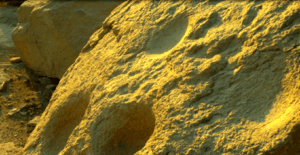Mojeque facts for kids
Mojeque, also known as Pampa de las Llamas-Moxeke, is a very old archaeological site. It is located in the Casma Province of the Ancash Region in northern Peru. Experts believe Mojeque was a special temple or religious place.
The site has two huge mounds, many smaller mounds, and stone figures. These figures show human heads and bodies. People think they might be pictures of gods or important leaders. Large groups of people would come here. They would watch and join in special ceremonies and rituals around the mounds. Mojeque is one of several big sites from the Casma/Sechin culture. These sites are found in the Casma and Sechin River valleys. Other important sites include Cerro Sechin, Sechin Alto, and Sechin Bajo. The Sechin River flows into the Casma River.
Contents
Exploring Mojeque: Who Studied It?
Early Discoveries at Mojeque
The Mojeque site was first explored by a Peruvian archaeologist named Julio C. Tello. Later, his student Toribio Mejia Xesspe made an exciting find. He discovered large, colorful figures at Mojeque. These figures are a key feature of the site. One famous image found here is called the "Weeping God." This same image has also been found at other ancient sites in the Andes mountains.
When Was Mojeque Built?
At first, people thought Mojeque belonged to the Chavin culture. However, American archaeologists Thomas and Sheila Pozorski studied the site in the 1980s. They found that Mojeque was built much earlier. They believe its construction happened during the "Initial Period." This time period was from about 1800 BC to 900 BC, which is before the Chavin culture. The Pozorskis also saw that Mojeque is connected to a nearby ancient area called Pampa de las Llamas.
The Amazing Mounds of Mojeque
What Are the Main Mounds?
Mojeque has two very large mounds shaped like pyramids. They are called "Moxeke" and "Huaca A." These two mounds are about 1.3 kilometers (less than a mile) apart. They are lined up very precisely, pointing N 41° E.
How Big is the Site?
Around these main mounds, there are more than 100 smaller mound structures. These smaller mounds also line up with the main ones. The entire Mojeque site covers about 2 square kilometers. That's a very large area!
Other Buildings at Mojeque
The site also has remains of many other buildings. These include places where leaders might have worked, called administrative buildings. There were also groups of homes of different sizes. This shows that many people lived and worked around this important temple.
Moxeke: The Main Pyramid
Moxeke is the biggest mound. It is a stepped pyramid with at least six platforms. It was about 30 meters (nearly 100 feet) tall. Its base was almost square, measuring about 160 by 170 meters. This huge structure was built using very large stones. Builders also used special cone-shaped adobe bricks. The Pozorskis found some signs that there might have been even older buildings on the site before these pyramids were built.
See also
 In Spanish: Pampa de las Llamas-Moxeke para niños
In Spanish: Pampa de las Llamas-Moxeke para niños


